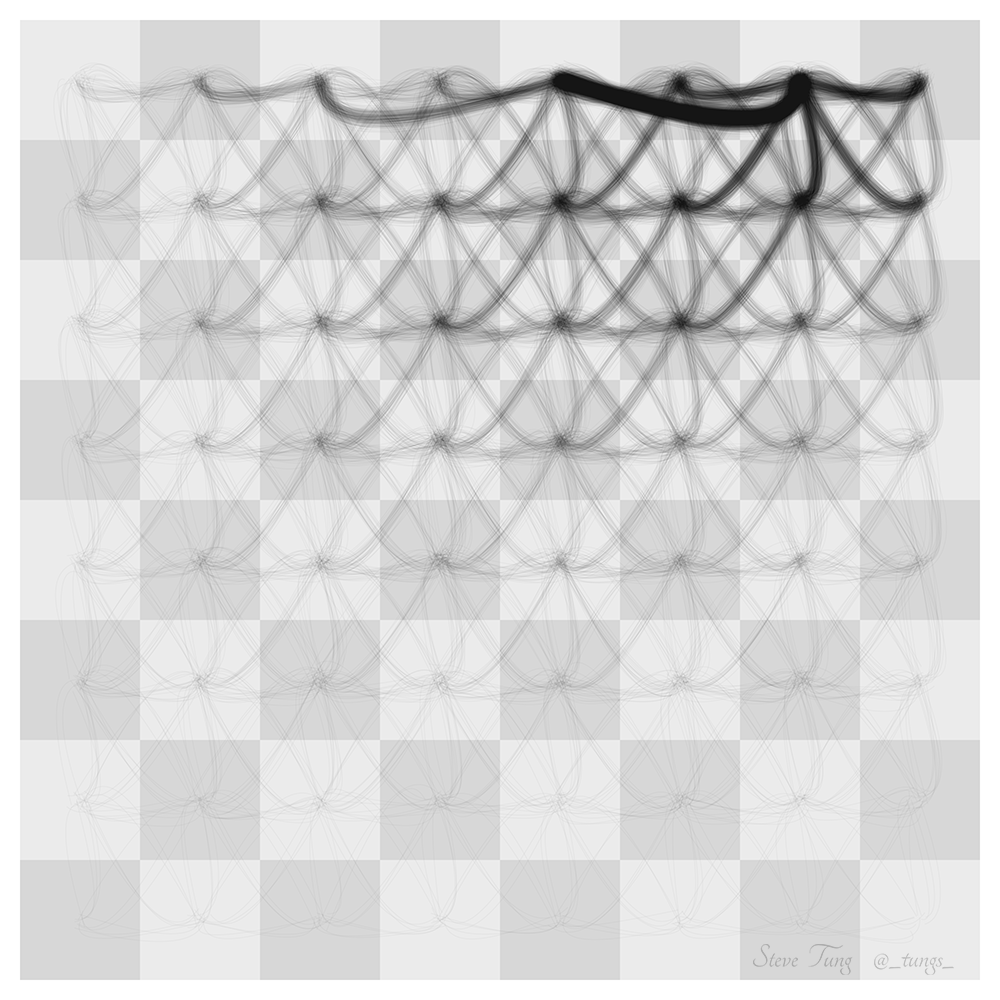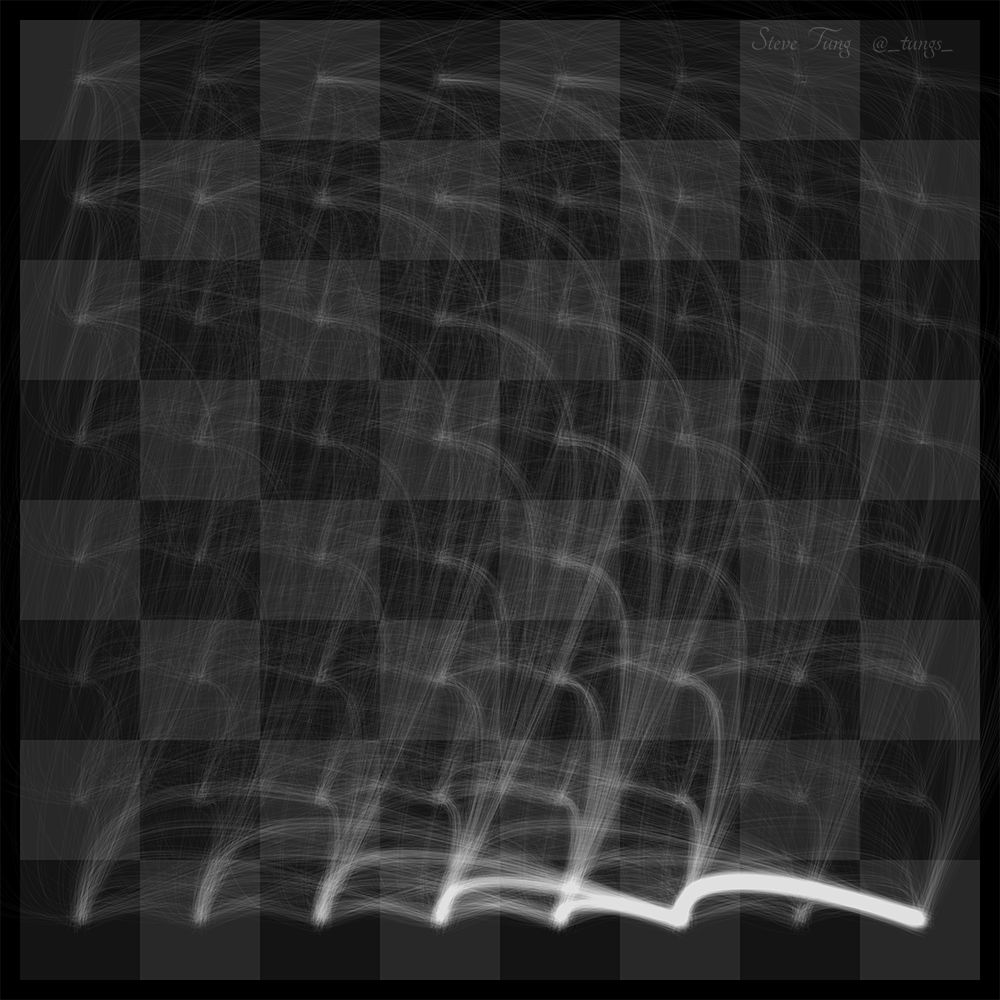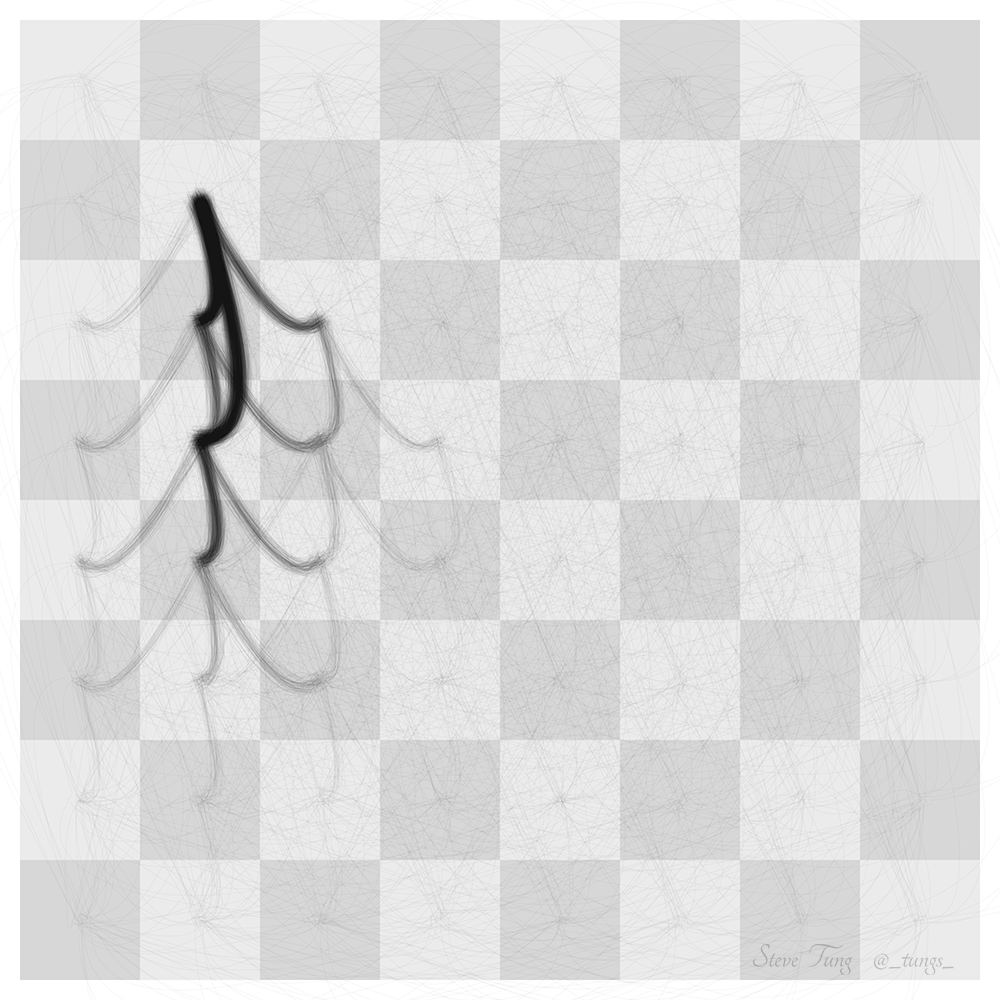Nov 2015
Nov 2015
Steve Tung (@_tungs_) has made a stunning set of visualisations from an open data source of over 2M chess games. Using Python and node.js he plotted the frequency that each piece makes a particular move.






Interestingly the pawn data appear to also record the instances where the piece has made it to the end of the board and being upgraded. We can see instances of the Queen rushing back to the baseline to project her King.
Information is Beautiful consistently create clean and thoughtful visualisations. With the addition of Apple Music to the scene this viz does a great job of transforming royalty data into a form that is easy to understand and relate to.

There's a mixture of viz techniques here: parallel coordinates show the relationship between a company's user size and the royalties they pay, while also ranking them in order. On the right hand side they have plotted a function of this data: the percent of users that need you play an artist's track (each month) to make minimum wage. There is quite a variation in this percentage data, and the range required for a standard bar chart would have drowned out some of the lower values. The use of discrete circles, which represent 1% each, is a clever way to overcome this. Similarly they didn't let YouTube's massive user base dominate the parallel coordinates. By placing the 1,000M data point above the top axis, it's clear that there is a separation and the chart remains visually appealing.
One key thing they've missed from the label is the frequency with which users are required to play a song. If it was just once a year, then it doesn't appear too bad for the artists. Once a day however, would be tough. Thankfully Information is Beautiful also publish their underlying data and we can see that their figures were calculated using plays per month and the US minimum wage of $7.25/hour, assuming a 40hour week.